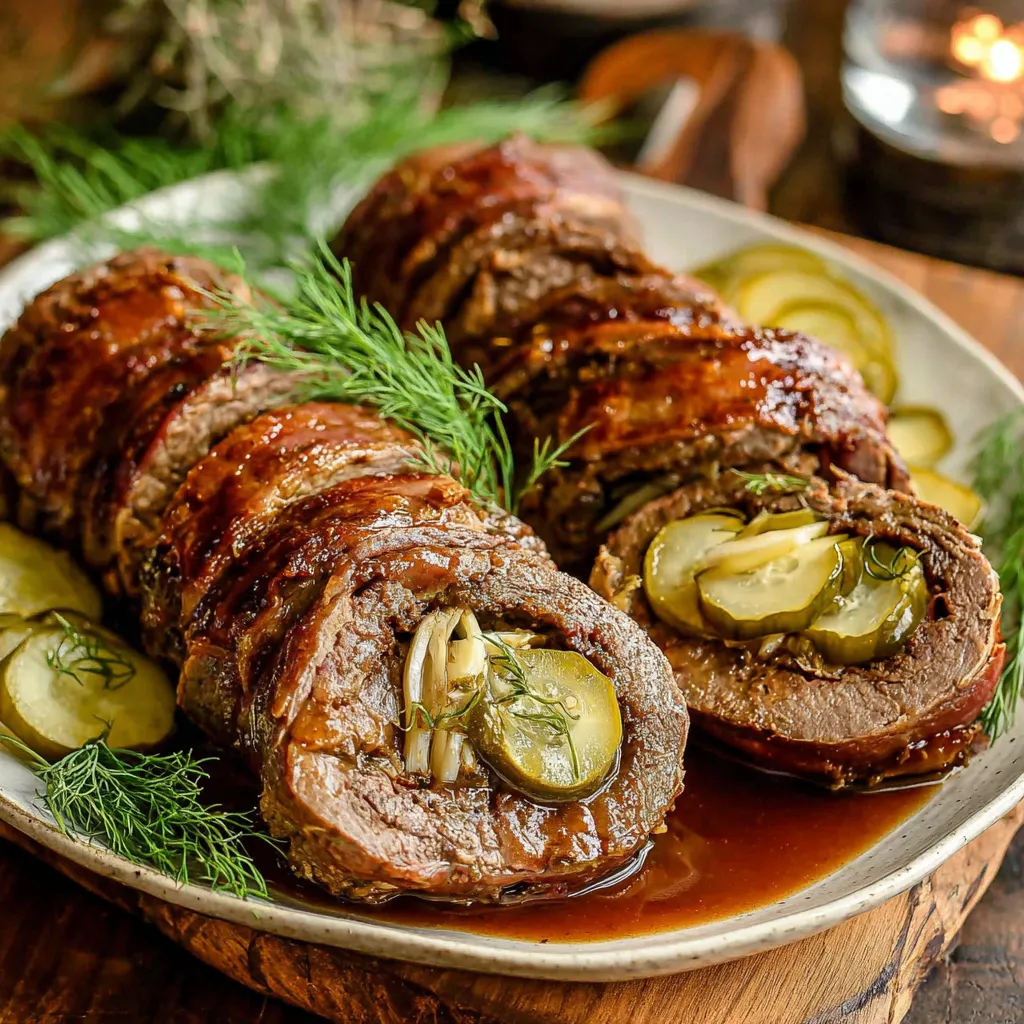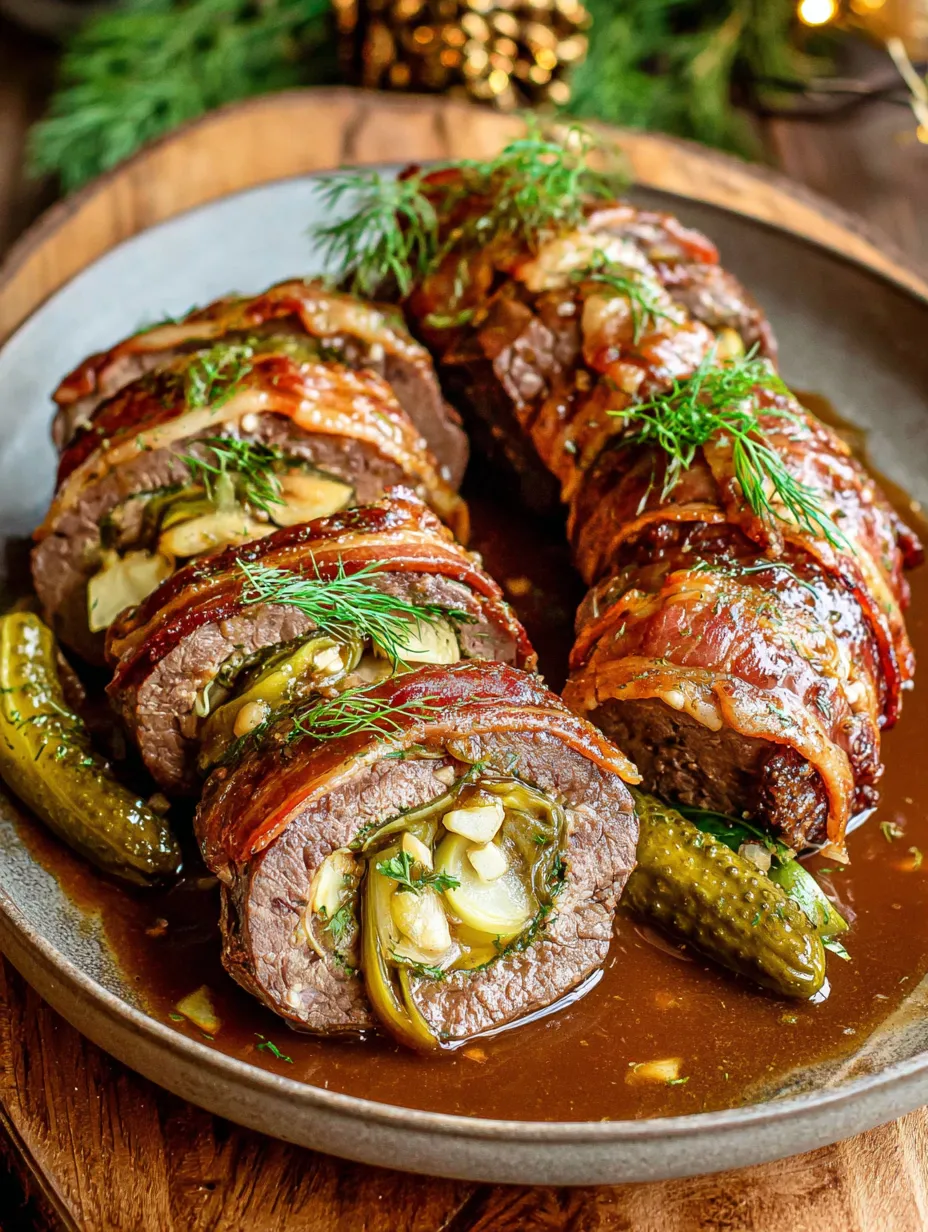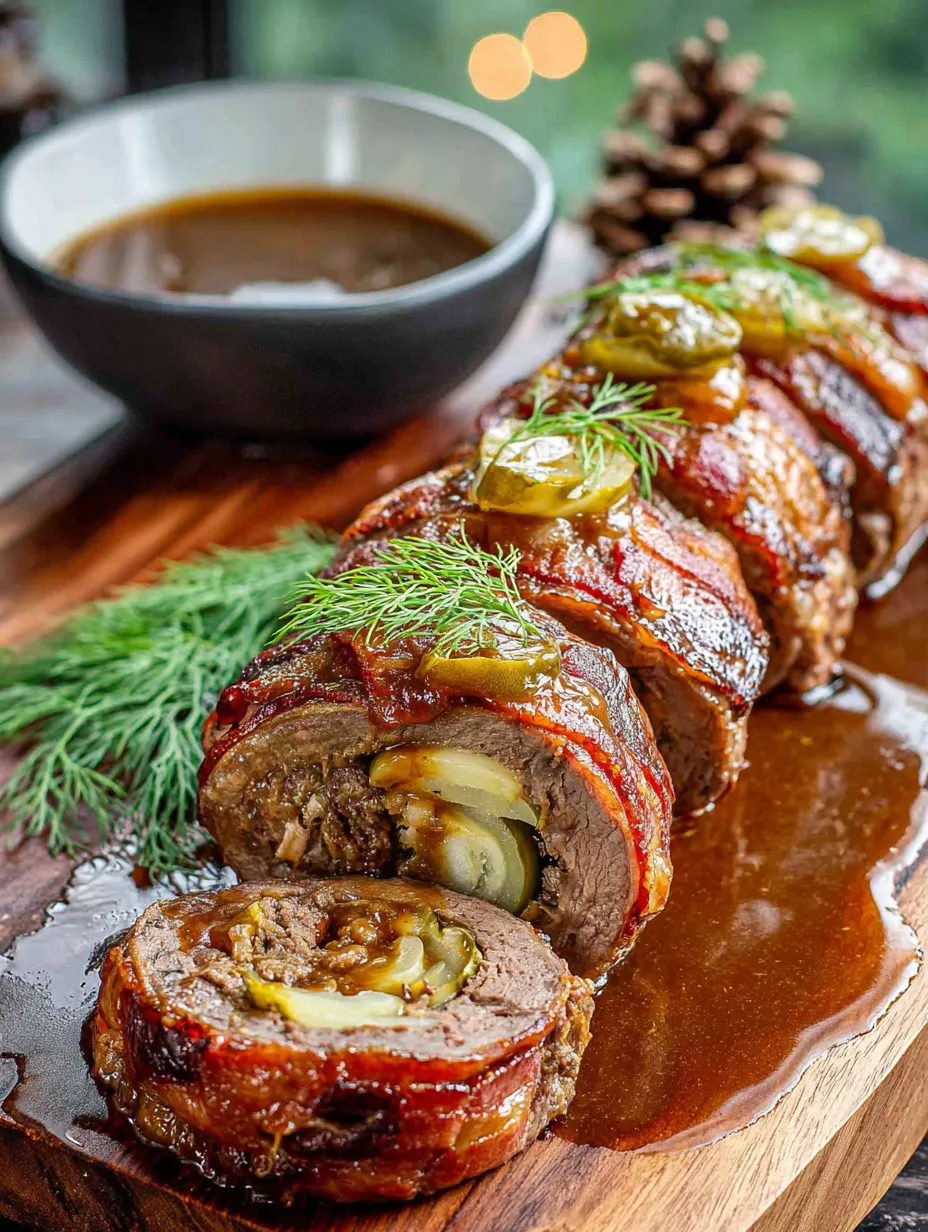 Save
Save
My Nana’s German Beef Rouladen is the ultimate comfort meal. Tender beef wrapped around bacon pickles and onions then simmered gently until rich and saucy this dish always brought our family together on Sunday afternoons. If you have been searching for a cozy traditional German dinner this recipe has stood the test of time.
The first time I made these alone I was a teenager and managed to burn the onions but my Nana just winked and said it made the sauce better. Now this recipe always reminds me of her encouragement and laughter at the table.
Ingredients
- Thin slices of beef: top round or flank steak work best choose ones with nice marbling for flavor and tenderness
- Yellow or Dijon mustard: adds brightness and gentle heat use a smooth variety for easy spreading
- Bacon: gives the rolls smoky depth and a little fat for tenderness look for thick cut with good meat to fat ratio
- Large onion: sliced thinly for sweetness make sure it is fresh and firm for the best flavor
- Dill pickles: sliced lengthwise bring tang and bite crisp ones hold up best so opt for a high quality brand from the refrigerated section
- Salt and pepper: to season the meat
- Vegetable oil: for browning use a neutral oil with a high smoke point
- Beef broth: a richly flavored broth builds a deep base for the gravy a homemade or low sodium version is ideal
- Red wine: optional adds complexity to the sauce pick a dry red you would happily drink or simply use more broth
- Flour and butter: whisked together for thickening the gravy use real butter for a glossy traditional finish
Step-by-Step Instructions
- Prepare the Beef Rolls:
- Lay each beef slice flat on a cutting board. Generously spread one side with mustard using the back of a spoon to reach all the edges. Top each piece with a slice of bacon several onion slices and a long pickle spear. Beginning at the short end roll up tightly tucking the filling inside as you go. Secure each roll shut with kitchen twine or sturdy toothpicks so the filling stays put during simmering.
- Brown the Rouladen:
- Heat vegetable oil in a heavy skillet or Dutch oven over medium high heat. Once hot add the rolls seam side down and brown on all sides turning slowly to prevent splatter. This process caramelizes the meat and adds depth to the eventual sauce. Work in batches so the pan is not overcrowded which helps achieve a proper sear with no steamed meat.
- Deglaze and Simmer:
- After all the rouladen are browned remove them to a plate. Pour red wine or extra broth into the hot pan scraping up every flavorful bit stuck to the bottom. Return the beef rolls to the skillet. Add the beef broth making sure liquid comes at least halfway up the sides of the rolls. Cover tightly and simmer over low heat for at least ninety minutes until the meat is completely tender and infused with sauce.
- Make and Finish the Gravy:
- Remove beef rolls to a plate and keep warm. In a small bowl mash together the butter and flour to form a paste. Whisk this mixture into the hot simmering liquid and stir until smooth. Let it cook for a few minutes until glossy and thick. Return the rolls to the pot turning to coat each one in the rich sauce. Taste and adjust seasoning if needed.
- Serve:
- Place the Rouladen on a platter and pour the gravy over top. Serve piping hot with mashed potatoes spaetzle or wide egg noodles to soak up every bit of sauce.

Every time I slice into the finished Rouladen and see the spirals of pickle and bacon I think of my Nana’s hands rolling each piece with care. Her love for sharing food is what inspired me to pass along this tradition today.
Storage Tips
Leftovers keep well in the refrigerator for up to three days tightly covered. The flavors deepen even more overnight. You can also freeze cooked rouladen with gravy in an airtight container for up to three months. Reheat gently on the stove or in the oven so the beef stays tender.
Ingredient Substitutions
Out of top round or flank steak Try sirloin tip or even thin sliced brisket for a slightly different texture. No red wine Use an extra splash of broth and a dash of balsamic vinegar for brightness. If you love extra tang try spicy mustard or an extra layer of sliced pickle inside each roll.
Serving Suggestions
German Beef Rouladen shines with buttery mashed potatoes homemade spaetzle or wide egg noodles. I also love a simple side of red cabbage or steamed green beans to balance the richness. For a classic touch serve with a spoonful of grainy mustard at the table.

Cultural and Historical Context
Rouladen probably began as humble peasant fare using economical cuts of beef filled with whatever was on hand. Over time it became a staple at Sunday and special occasion dinners across Germany. Those pickles and bacon inside are classic touches from central and southern regions where my Nana’s family lived.
Recipe FAQs
- → What cut of beef is best for Rouladen?
Use top round or flank steak sliced thinly for easy rolling and tender results after cooking.
- → Can the red wine be substituted?
Yes, use extra beef broth in place of red wine for a milder flavor without compromising richness.
- → What are traditional fillings for German Rouladen?
Classic fillings include yellow or Dijon mustard, bacon strips, sliced onions, and dill pickles.
- → How do you prevent the rolls from unraveling during cooking?
Secure each roll with toothpicks or kitchen twine before browning and simmering.
- → How is the sauce thickened?
Whisk flour and butter into the simmering pan juices to create a smooth, rich gravy.
- → What should I serve with German Rouladen?
Serve with classic sides such as mashed potatoes, spaetzle, or buttered noodles to soak up the savory gravy.
